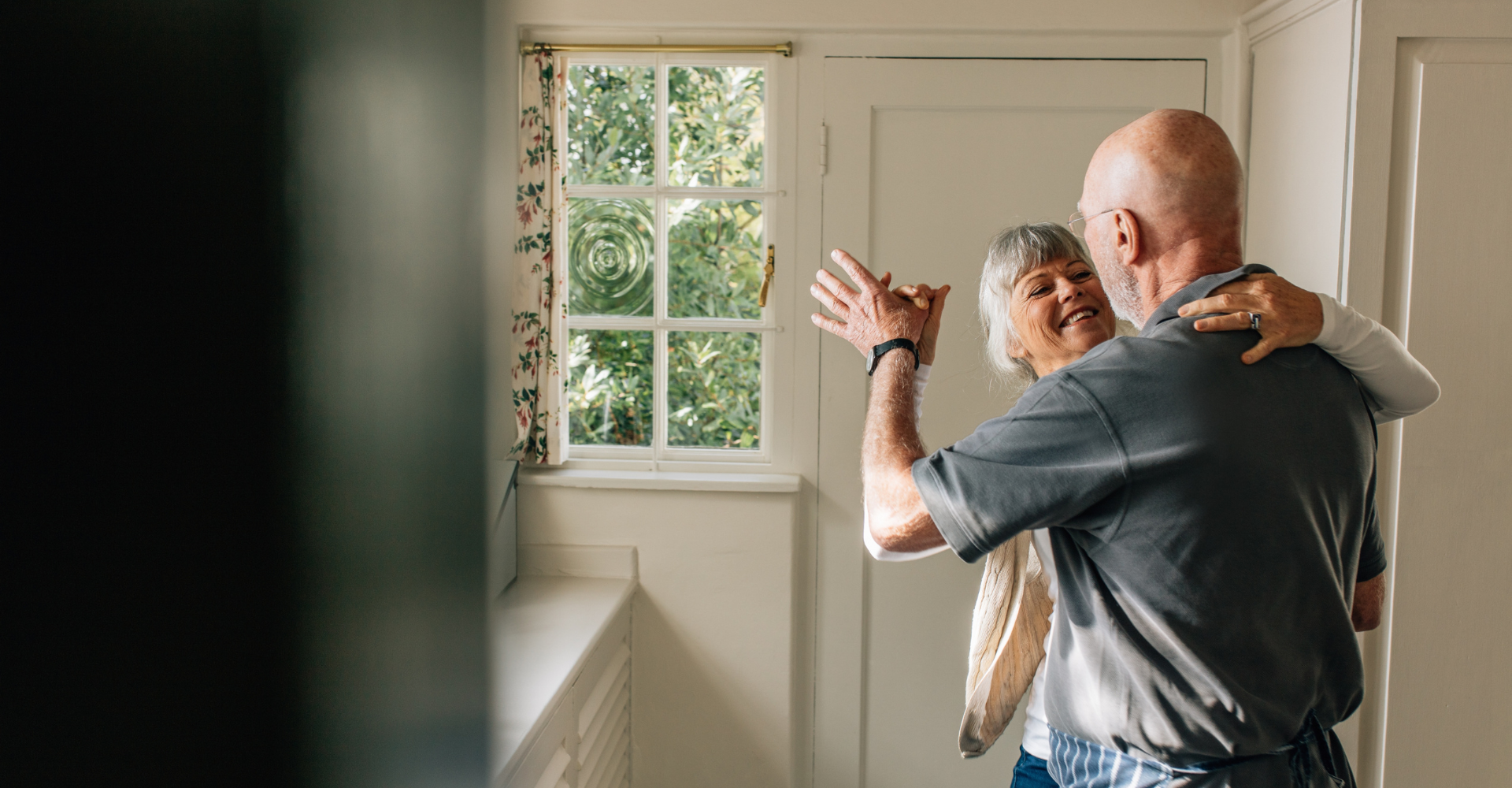Your home is your sanctuary, a safe, deeply personal space, hopefully full of a lifetime of memories created with the people you most love. Therefore, it’s unsurprising that a 2020 survey reported that 91 per cent of Canadians of all ages, and almost 100 per cent of Canadians 65+, responded that they plan on living independently in their own homes for as long as possible.
Those who are healthy enough to remain in their own homes as they get older will likely need to make modifications to stay there safely while supporting their independence and decreasing costs.
Most home modifications are not free however, and they take planning. We rounded up rebates, loans and grants available to Canadians that may be of interest as you make plans and adjustments to live as long as possible in your own home.
Grants and Rebates
Most territories and provinces have aging in place programs, and the federal government offers national green energy home renovation programs. Choose your province or territory below to explore your options.
The Greener Home Initiative funding offers up to $10,000 in grants to help homeowners get rid of oil furnaces in exchange for heat pumps. See here for more information.
Canada Greener Homes Loan offers up to $40,000 interest free loans for 10 years to finance eligible retrofits for better energy efficiency. See here for more information.
The March of Dimes offers local funding across the country to help those who live with a disability and who can’t afford the modifications they need to maximize their independence. See here for more information.
The Seniors Home Adaptation and Repair Program (SHARP) allows seniors to use their home equity to remain in their homes and maintain their independence. Eligible seniors can apply for a low-interest home equity loan with the Government of Alberta to cover repairs, adaptations and renovations to their primary residence. See here for more details.
This program provides funding for basic medical equipment and supplies so clients can live independently at home and within their communities. See here for more information.
Finance and invest in energy efficiency and renewable energy upgrades by accessing competitive rates covering up to 100 per cent of project costs. Repay through your property tax; project financing is tied to the property, not the property owner, meaning if the property is sold, the new owner assumes repayment. See here for more information.
A number of cities in Alberta offer rebate programs for energy-efficient upgrades, See here for more information.
BC RAHA is a rebate program. Eligible households can receive up to $20,000 in rebates to complete home accessibility adaptations. See here for more information.
Get up to $10,000 in rebates for making energy efficiency upgrades to your home. See here for details.
BC Hydro offers free programs for lower-income customers to help save energy and money. Get free products and advice to help save energy, lower energy bills and make your home more comfortable. See here for more information.
BC Hydro also arranges deals on energy-efficient products for their clients. See here for more information.
If you’re a senior aged 65 or older, the BC home owner grant reduces the amount of property taxes you pay each year for your principal residence. See here for more information.
The Low-Income Grant Supplement for Seniors allows eligible seniors to supplement their home owner grant if it’s been reduced or eliminated because of the high assessed value of their principal residence. See here for more information.
Manitobans 65+ and family members who have seniors living with them can apply for funding of up to $5,000 ($6,500 in rural and remote areas) to help fund basic home adaptations that are essential for daily living. Applicants can apply for a grant every three years, to a lifetime maximum of $15,000. To be eligible, the applicant must have a combined household income of $60,000 or less.
The program will be administered by March of Dimes Canada.
See here for more information.
The Manitoba government offers a variety of programs and rebates to help save energy, money, and the environment. See here for more information.
This energy saving program offers free and subsidized energy efficiency upgrades for income qualifying households. Offers include Free Home Energy Check-up, Free Insulation, Natural Gas Furnace and Boiler Upgrade, and Free Energy Saving Devices. See here for more information.
Up to $7,500 in the form of forgivable grants and repayable loans is provided to eligible homeowners who require accessibility changes to their residences, enabling them to remain in their own homes longer. NLHC provides funding for repairs to eligible homeowners in the form of forgivable grants and repayable loans.
Repairs exceeding $7,500 may be addressed under a repayable loan of up to $10,000 ($13,000 in Labrador). Forgivable loans are earned by maintaining ownership and occupancy of the dwelling for five years.
See here for more information.
Eligible residents can apply for a grant of up to $5,000 from Newfoundland & Labrador Housing for projects that make their home more energy efficient. See here for more information.
Additionally, all residents can apply to the Newfoundland Power and Newfoundland and Labrador Hydro takeCHARGE program for incentives to help with energy-saving upgrades. See here for more information.
A forgivable loan of up to $15,000 is available for residents 60 and over to cover repairs that enable independent living and reduce energy costs. See here for more information.
The Arctic Energy Alliance provides free advice on existing and new homes and subsidizes the cost of home energy evaluations on existing homes. See here for more information.
The Arctic Energy Alliance (AEA) also provides rebates to northerners who purchase new, more energy efficient models of products that they use every day. See here for more information.
This program provides a grant of up to $6,500 for homeowners age 65+ who would like to remain in their own homes but cannot afford necessary repairs. The funding covers repairs that are a threat to health and safety. For example, repairs to roofing, plumbing and heating. See here for more information.
A one-time forgivable grant of up to $3,500 is available for homeowners 65+ to make permanent, age-related accessibility adaptations to their home. See here for more information.
Nova Scotia’s PACE program offers low-interest financing that covers the cost of energy-saving home upgrades in certain municipalities. The municipality pays upfront and then the homeowner pays the loan back over a set period. See here for more information.
The Elder Housing Program allows for a grant of up to $5,000 with the Annual Preventative Maintenance Grant. Also available is a one-time grant of up to $30,000 to cover costs of material and labour for home renovations and adaptations that will help elders remain in their home as their needs change. See here for more information.
Designed to provide financial assistance for eligible seniors who need to make accessibility and safety modifications to their homes. Homeowners may be eligible for a forgivable loan up to $20,000. See here for more information.
NB Power’s Total Home Energy Savings Program offer homeowners rebates and incentives for a range of home improvement or renovation projects such as energy-saving items like doors and windows or a heat recovery ventilator, or to upgrade your insulation or heating system.
This program is for adults 65+ or people with disabilities who own a home that is their sole and principal residence. The improvements must be permanent and remove physical barriers, safety risks and improve daily living within the home.
Households are allowed one application under the Ontario Renovates Program. Funding is provided as a fully forgivable loan of $15,000 along with a $5,000 grant for accessibility modifications for a maximum of $20,000. The loan is written off at an equal rate over a 10-year period and is not repaid if the homeowners remain as owners and live in the home during the 10-year forgivable period.
If you paid for renovations to improve the safety and accessibility of your home for a senior who lives there (even if you are not 65+ yourself), you might be able to claim the new Ontario Seniors’ Home Safety Tax Credit. This temporary tax credit is worth 25 per cent of the cost of your renovations. You can claim up to $10,000 for your expenses, therefore the highest refund you can get is $2,500. See here for more information.
This program provides support and funding to Ontario residents who have a physical disability of six months or longer. It provides access to assistive devices that meet individuals’ basic needs such as assistive and mobility devices. See here for more information.
If you’re a low-to-moderate income senior, you may be eligible for up to $500 back on your property taxes. See here for more details.
This program offers increased financial help for home and vehicle modifications needed because of a disability. You may be eligible for $10,000 every 10 years for your home and $6,000 every 8 years for a vehicle. See here for more information.
EfficiencyPEI will subsidize the cost of an EnerGuide home evaluation. If you then choose to proceed with efficiency upgrades after the audit, efficiencyPEI will further subsidize those costs by enhancing relevant rebates. See here for more information.
Improve your home’s energy performance and recoup expenses with the Rénoclimat grant program. See here for more information.
Whether you rent or own a house, condo, multiplex or multiunit residential building, get financial assistance from Hydro Quebec when you implement energy efficiency measures. See here for more information.
This grant for people 65+ aims to offset a municipal tax increase brought about by a significant increase in the value of your residence. See here for more information.
Access a forgivable loan for low-income households for the purpose of modifying dwellings to improve accessibility for a household member with a disability. See here for more information.
This program helps seniors in Saskatchewan with their cost of living by providing a repayable loan for the education property taxes on their home. See here for more information.
Yukon Housing Corporation recently launched a dedicated Accessibility Grant program, which helps homeowners retrofit their homes to make them more accessible for members who have mobility challenges. See here for more information.
The Good Energy Program is a rebate program offered by the Yukon Government for energy-efficient choices, including household appliances, products, services and heating systems, retrofits or upgrades to buildings and homes and more. See here for more information.
Finally, check out these great low and no-cost modifications to make to improve accessibility from the Canadian Mortgage and Housing Corporation.
While all of the above programs are currently running at the date of this article’s publication, government programs evolve, change or are cancelled. We will strive to keep this list updated, however if you do see an addition or edit, please email our editorial team at info@thehealthinsider.ca.
~ Read more from The Health Insider ~
- Affordable Dental Care is Here. This is where to find it.Don’t let cost stop you! THI breaks down the Canadian Dental Care Plan (CDCP) and shows you where to find discounted, supervised care near you.
- Optometrist vs. Ophthalmologist: Who to See, When and What Your Province Actually CoversStop guessing! This essential guide clarifies the roles of optometrists, ophthalmologists, and opticians, details provincial coverage for you, and sets your eye exam schedule.
- MRI Wait Times Too Long? Explore Your OptionsMany Canadians seek private or out-of-province MRIs for faster answers. Here’s how access works across Canada.
- Canadian Cancer Clinical Trials Database Launched for Doctors and PatientsCanada launched a clinical trials database with updated, verified listings and a hotline to help patients navigate their options.
- What to Do if You’re Experiencing Hearing Loss in Canada: A Step-by-Step Patient Resource GuideOur guide to hearing care in Canada. Get a province-by-province breakdown of government funding programs for hearing aids for seniors and all residents.
- Over 65 and Live in Ontario? Don’t Miss the New Free Screening for Abdominal Aortic AneurysmsA simple, painless ultrasound could prevent a life-threatening abdominal aortic rupture. Ontario launches Canada’s first AAA screening program.
The information provided on TheHealthInsider.ca is for educational purposes only and does not substitute for professional medical advice. TheHealthInsider.ca advises consulting a medical professional or healthcare provider when seeking medical advice, diagnoses, or treatment. To read about our editorial review process click here.
















